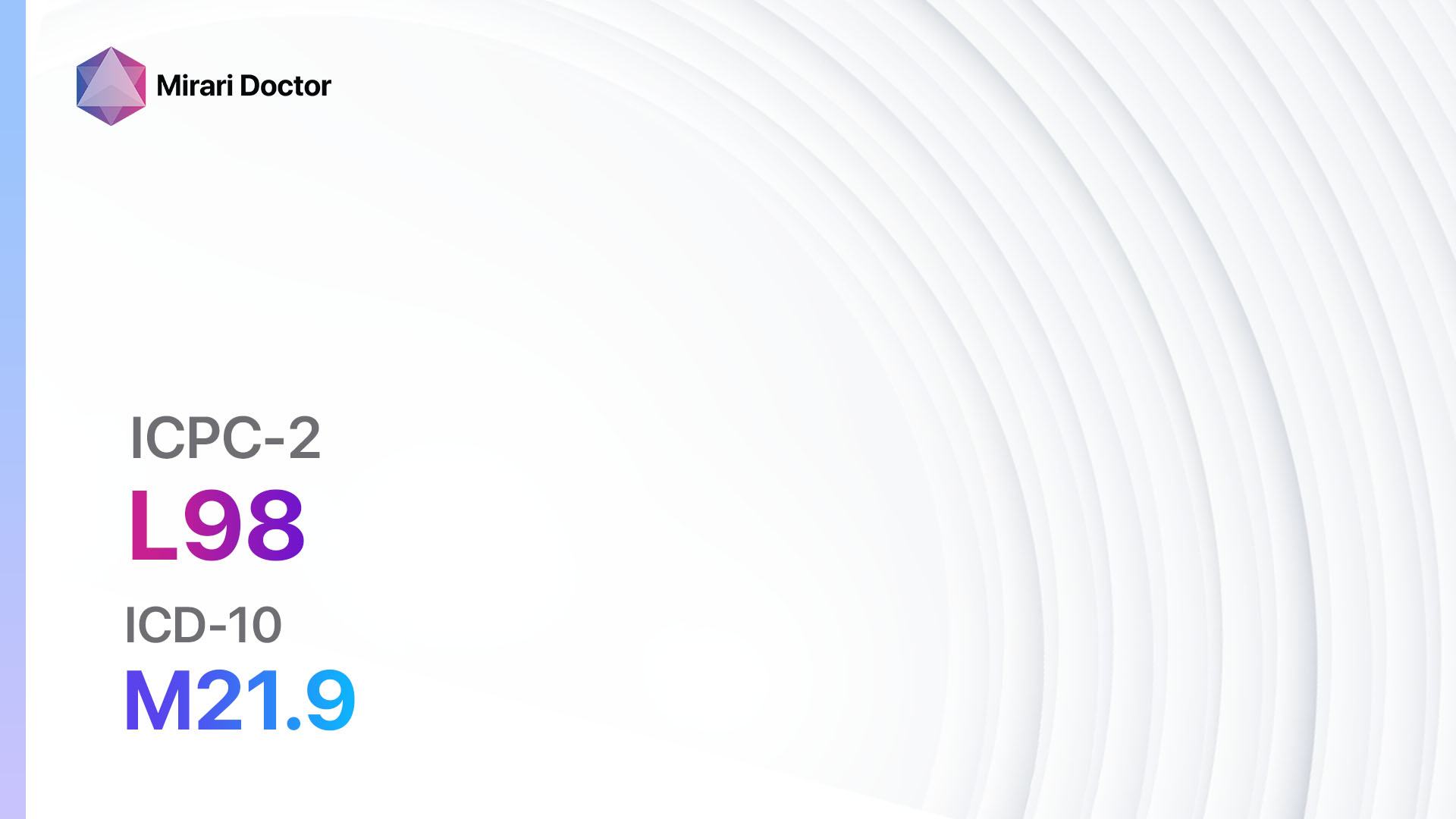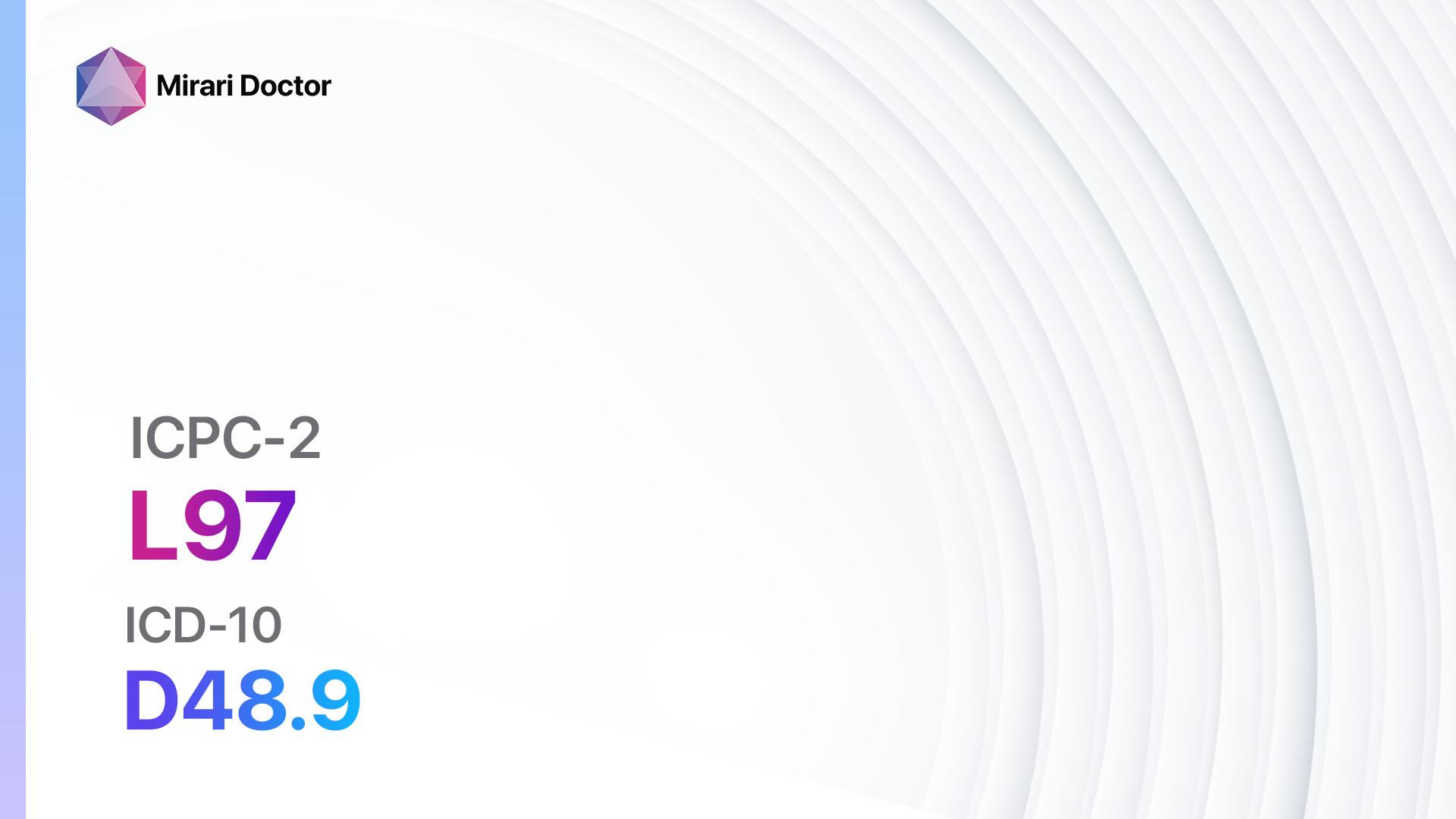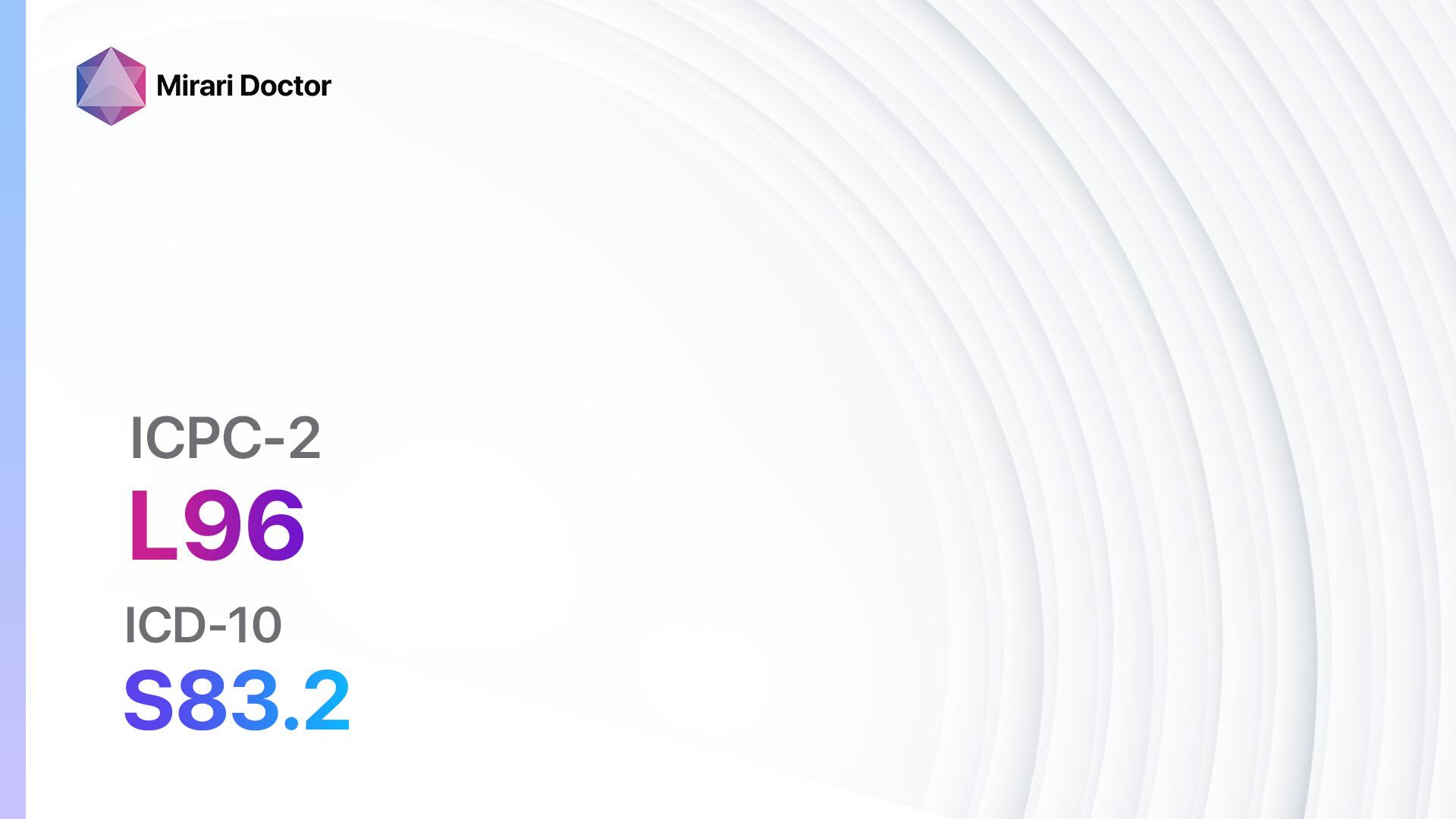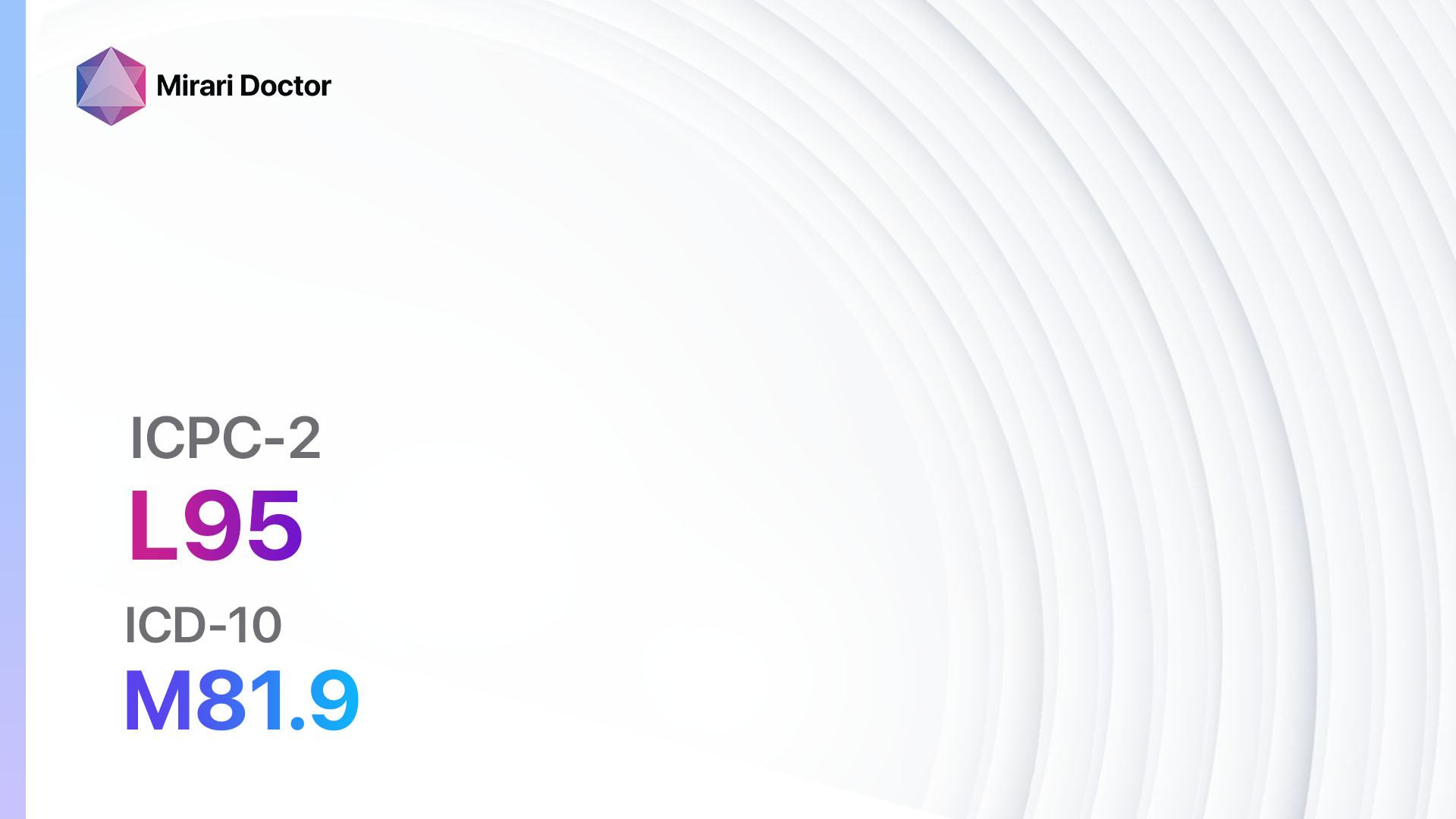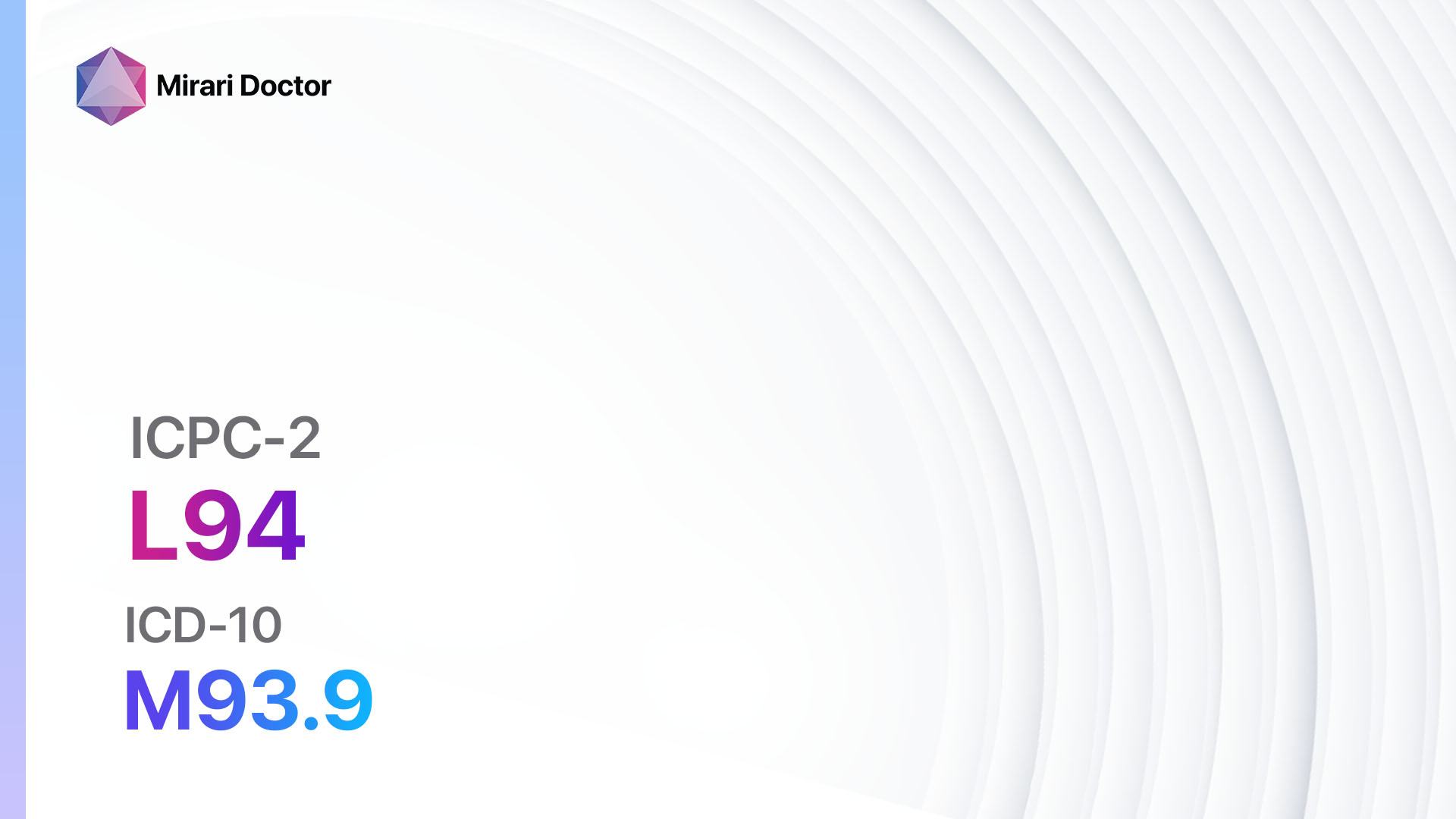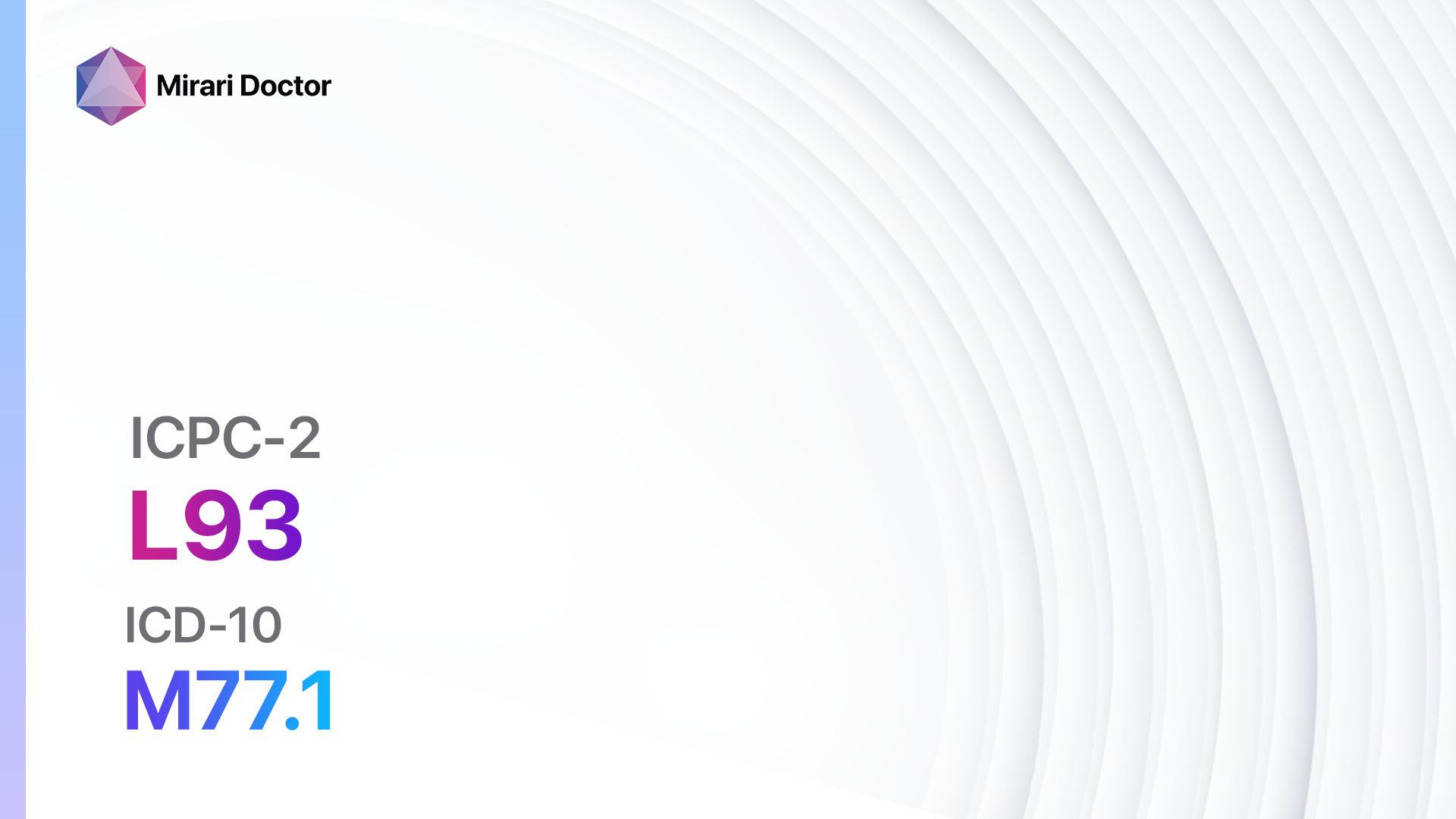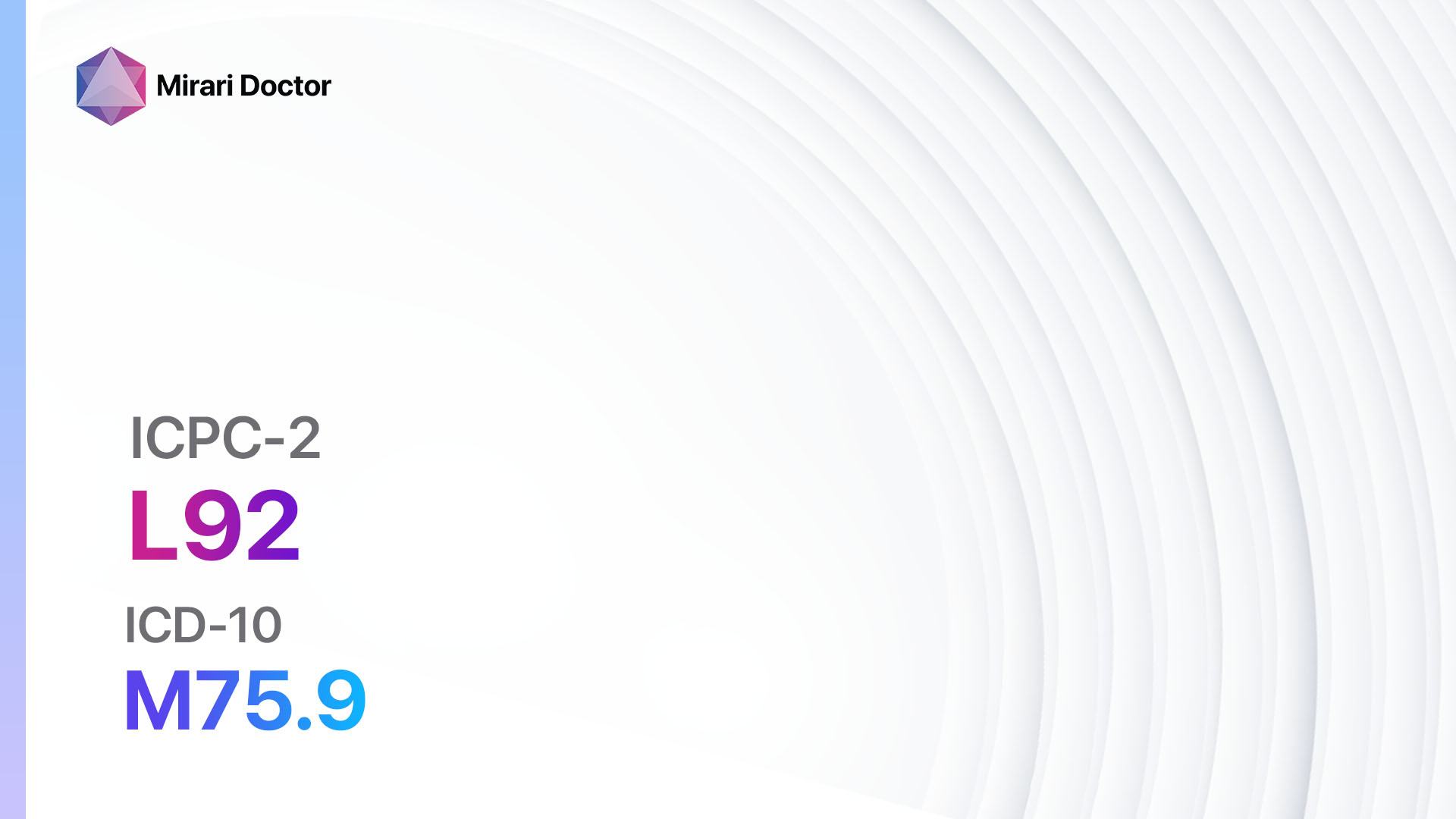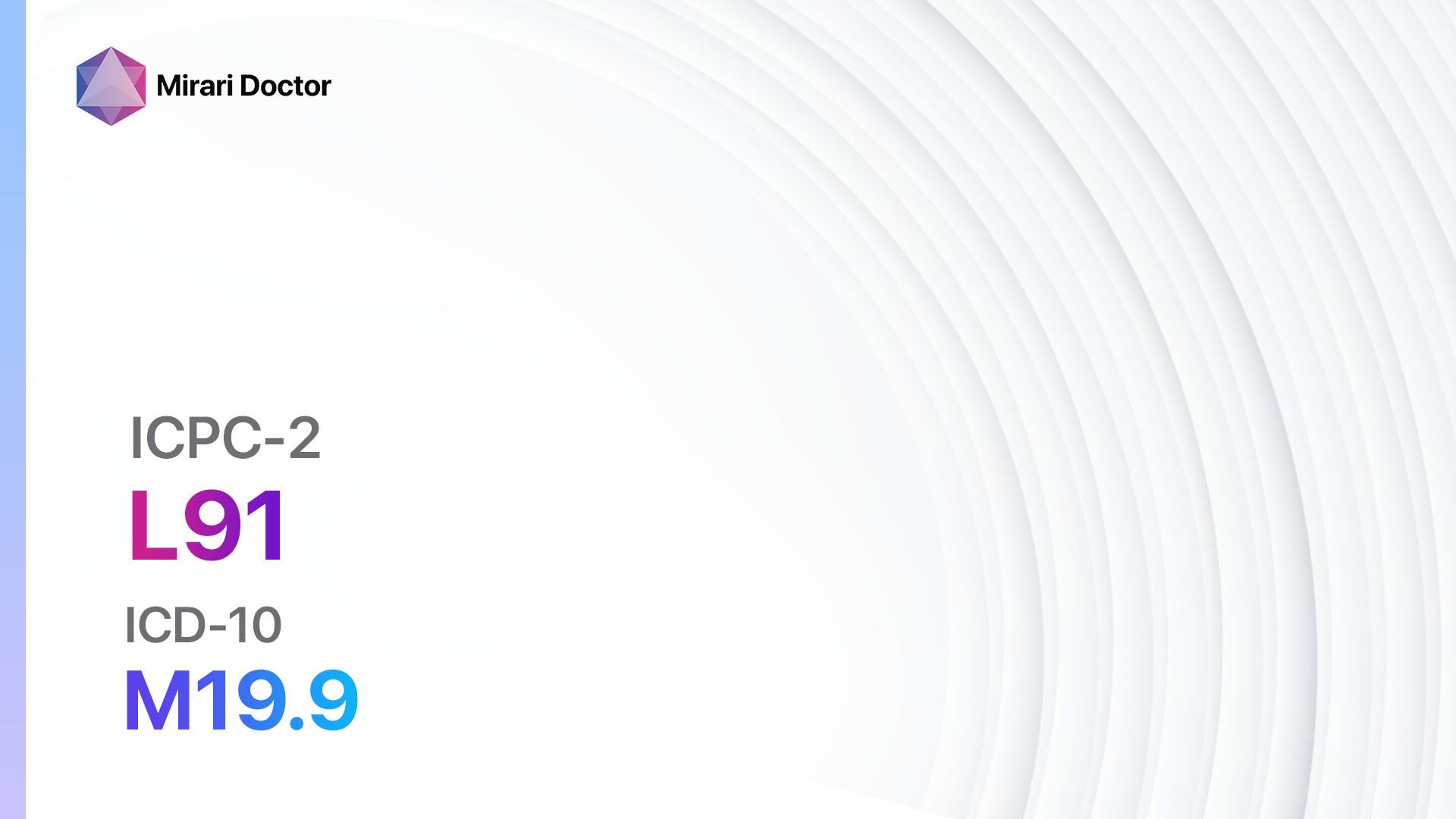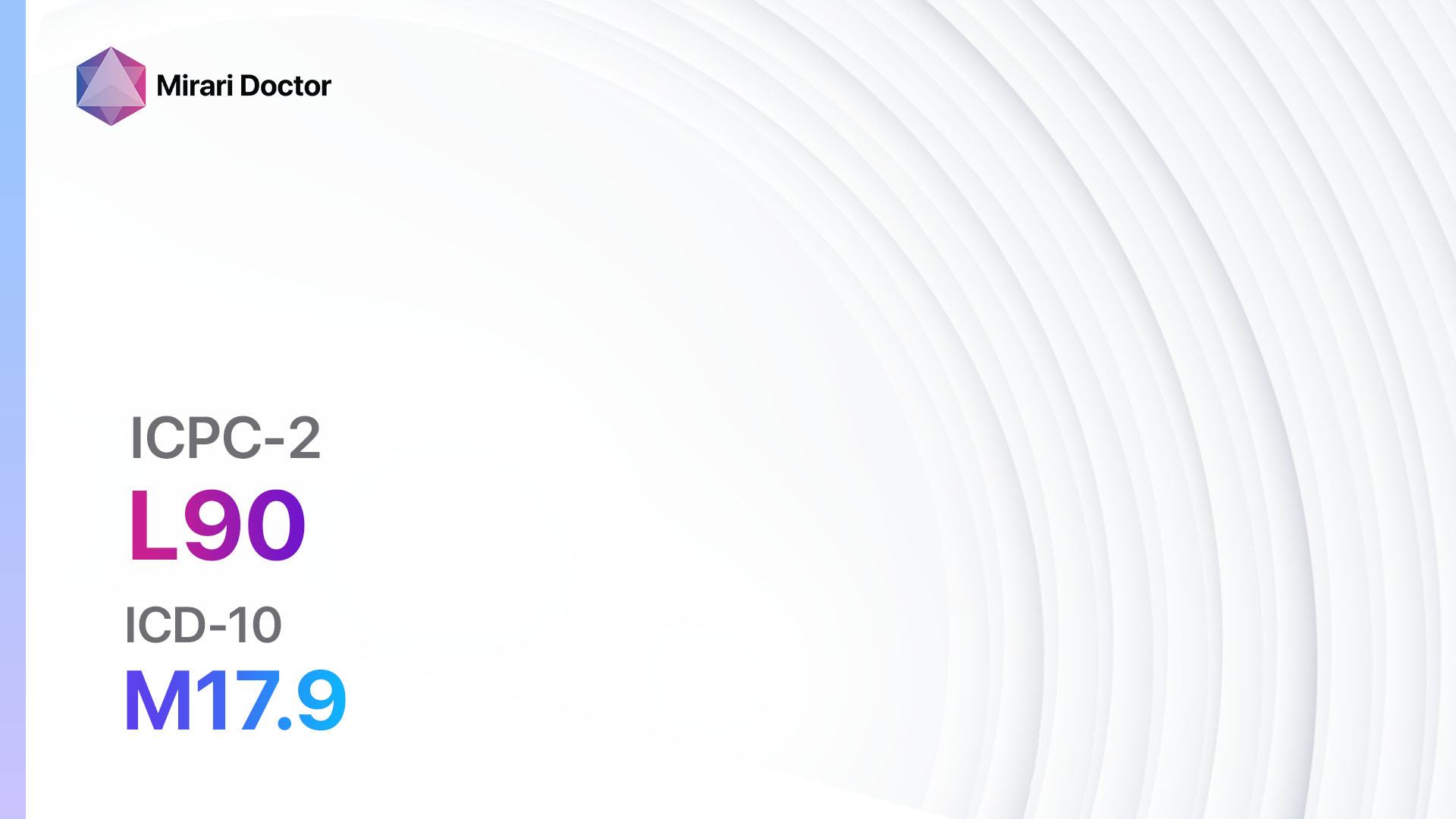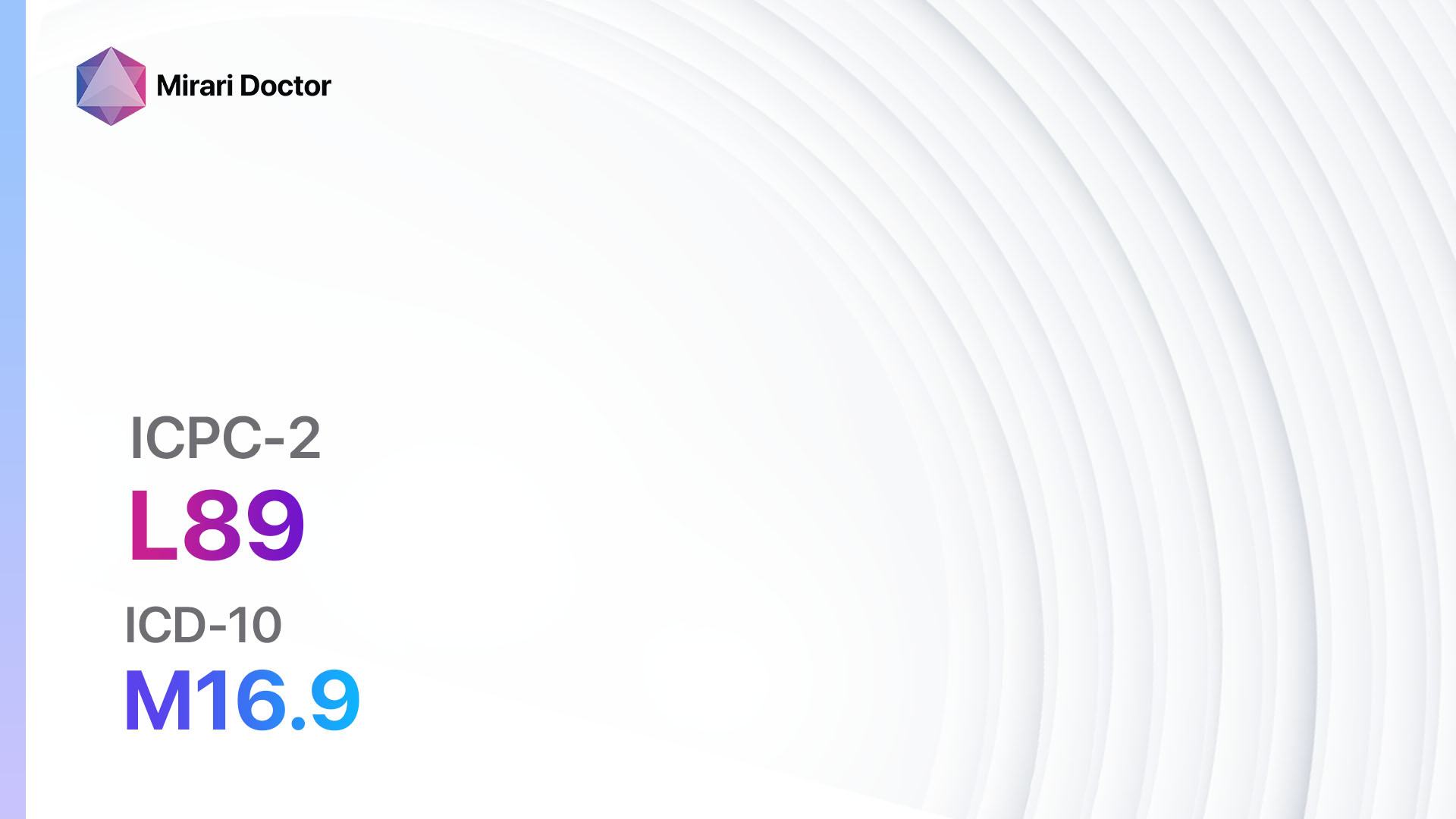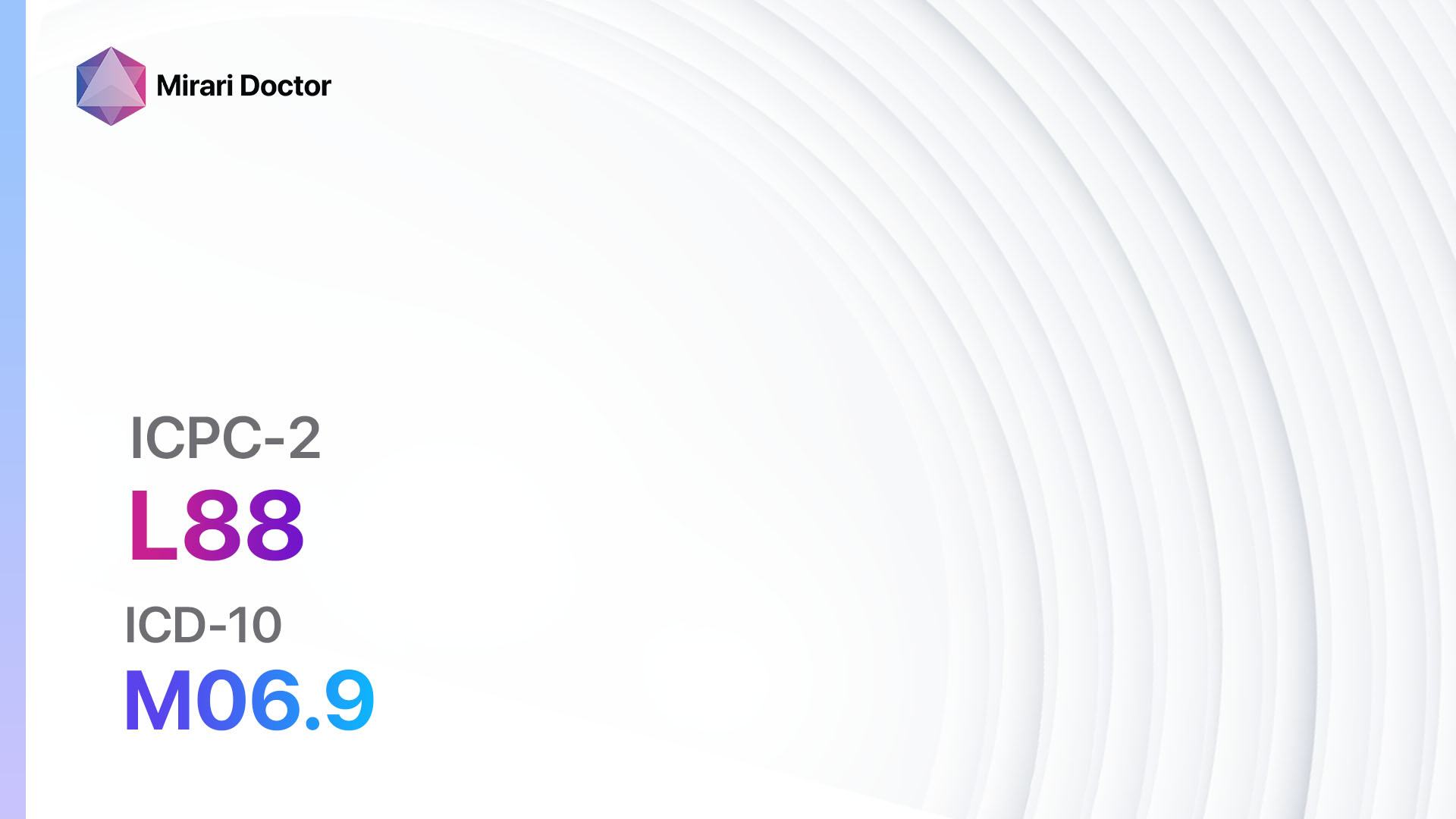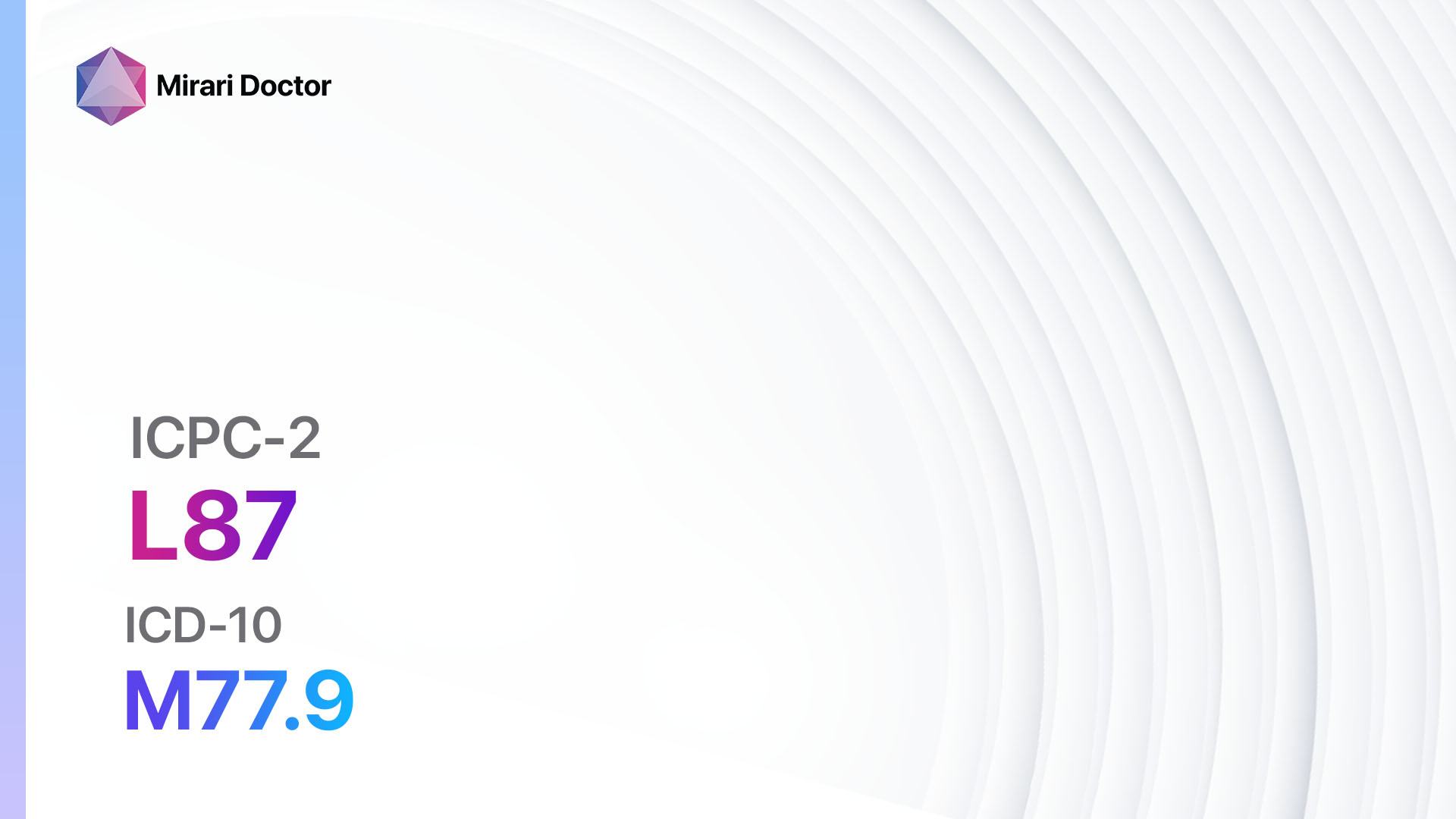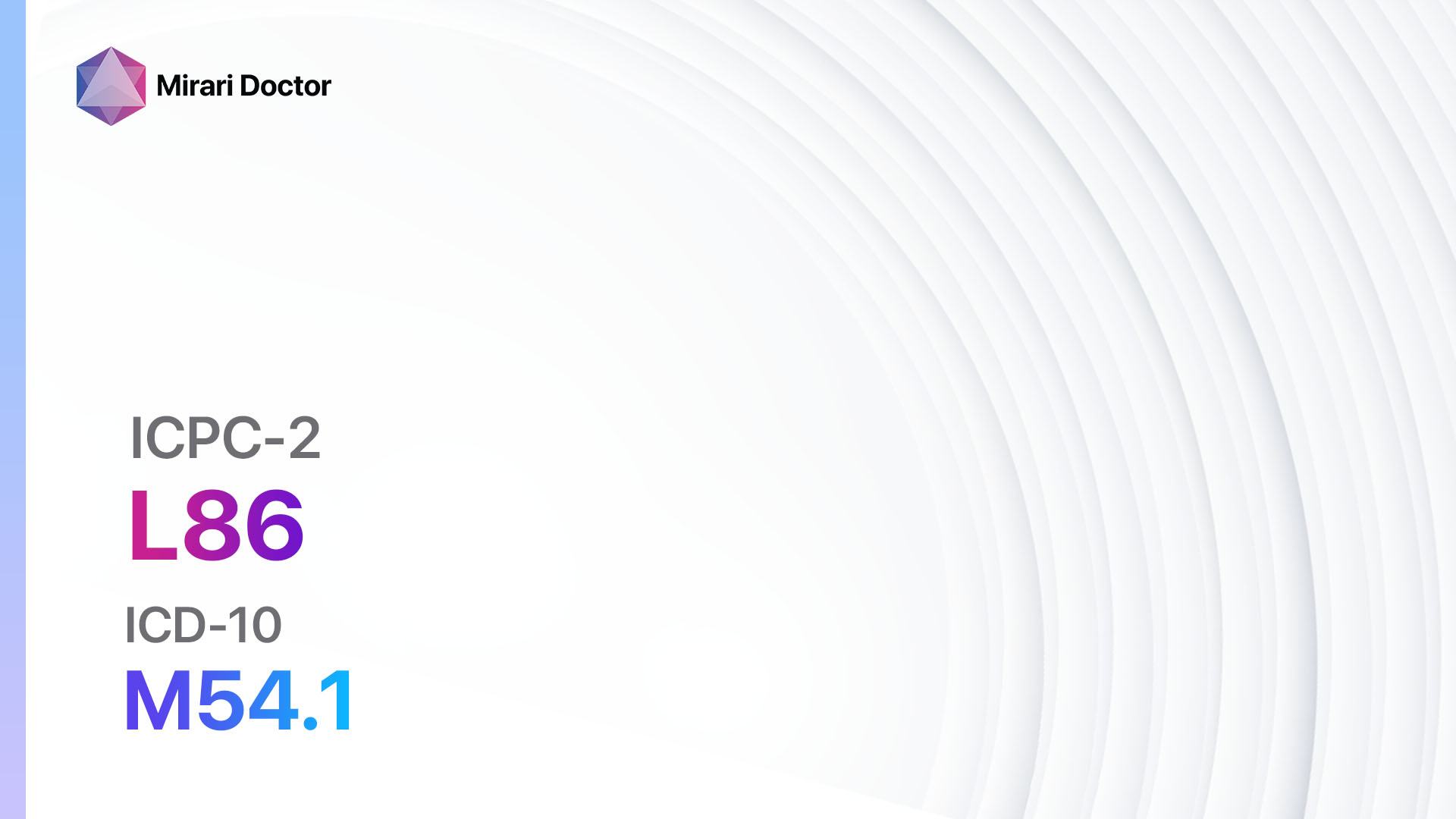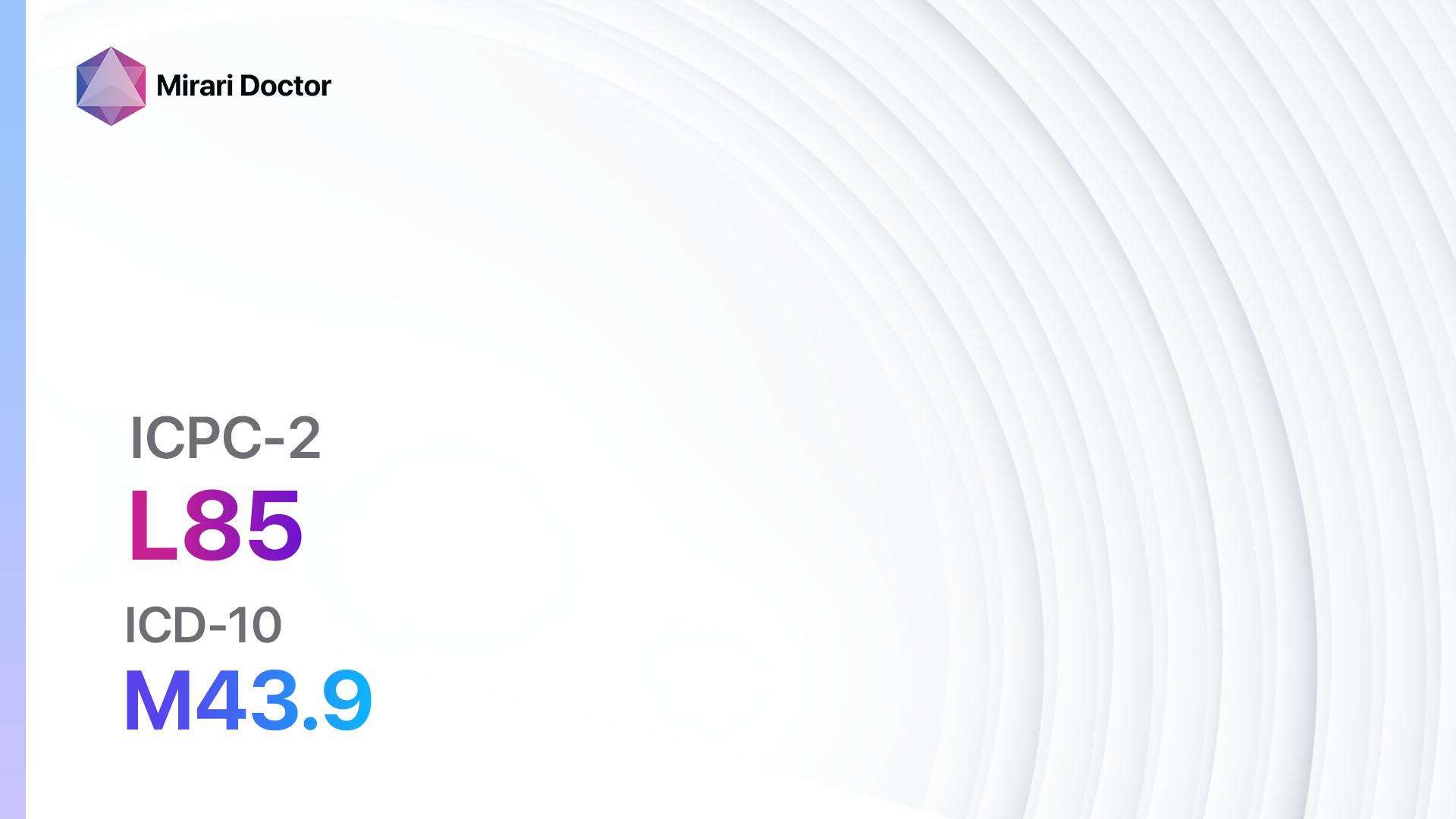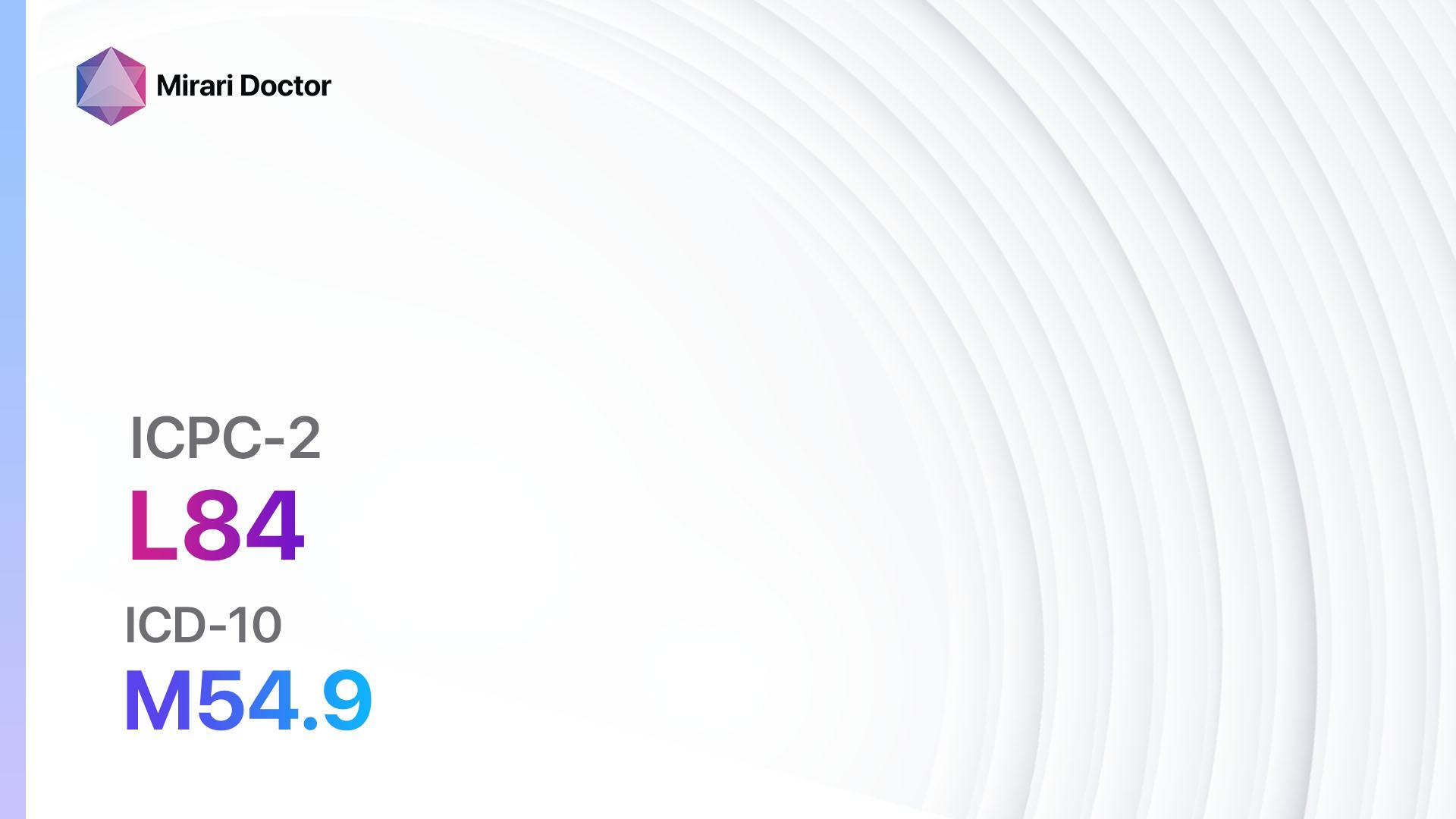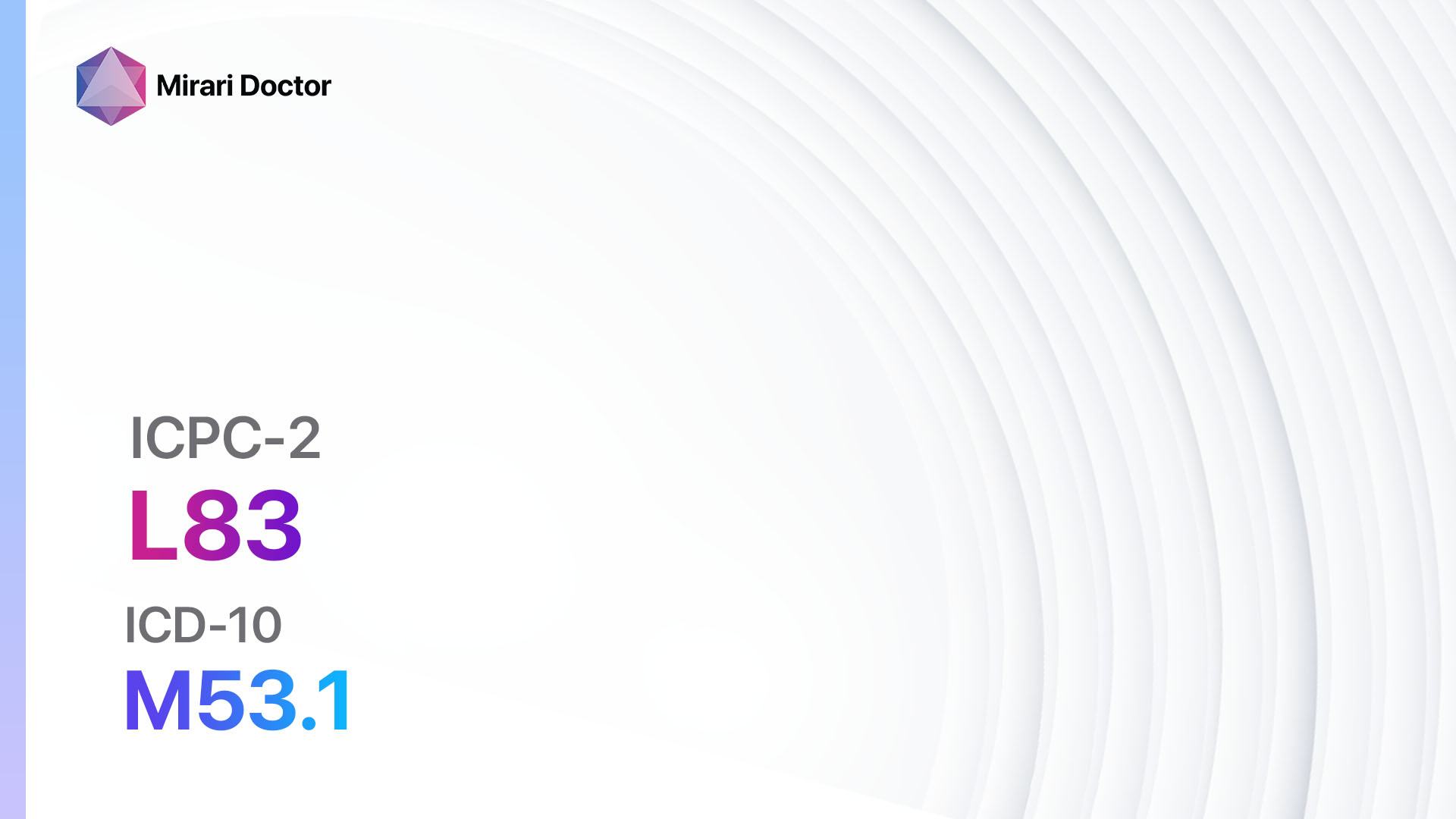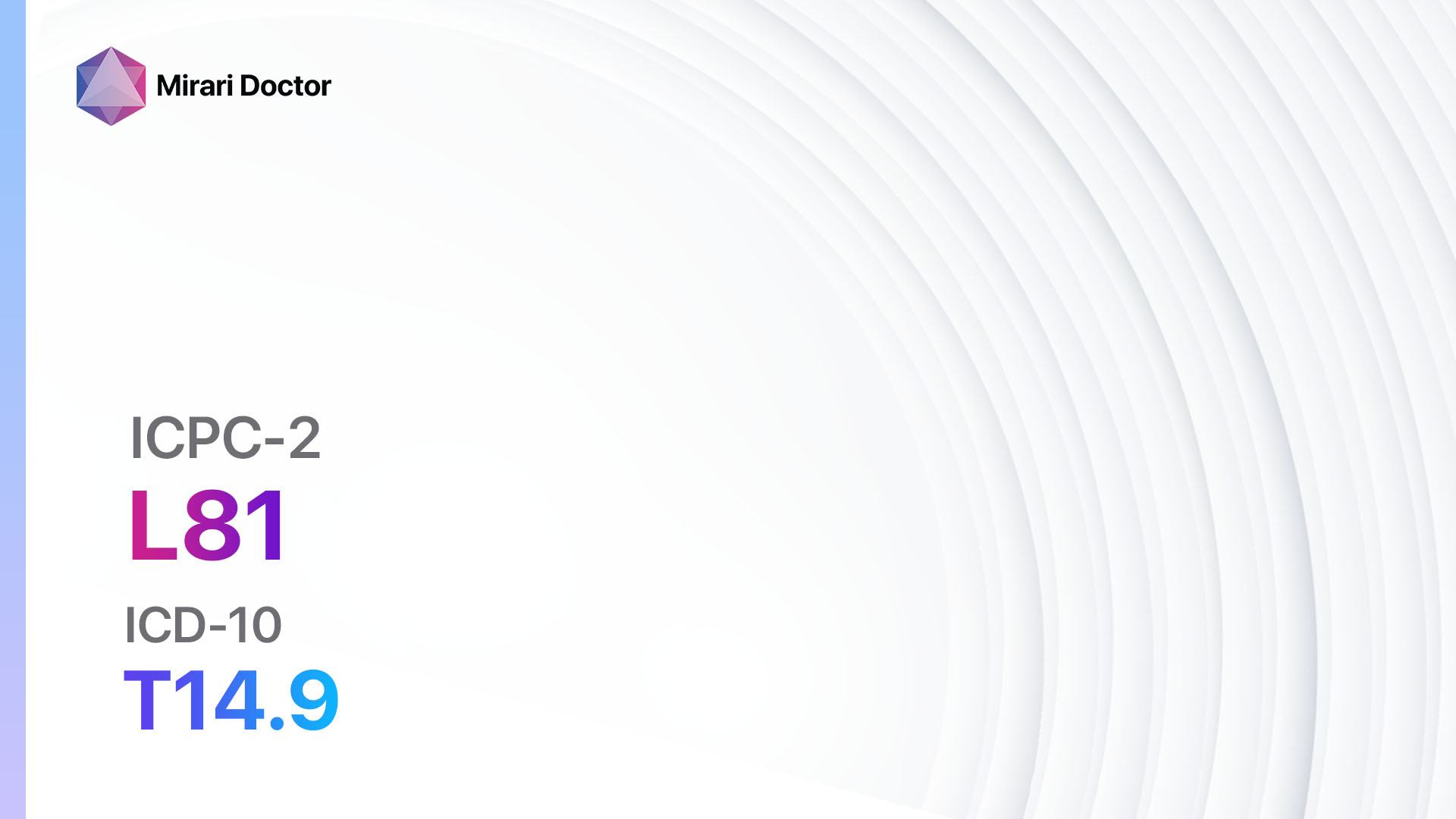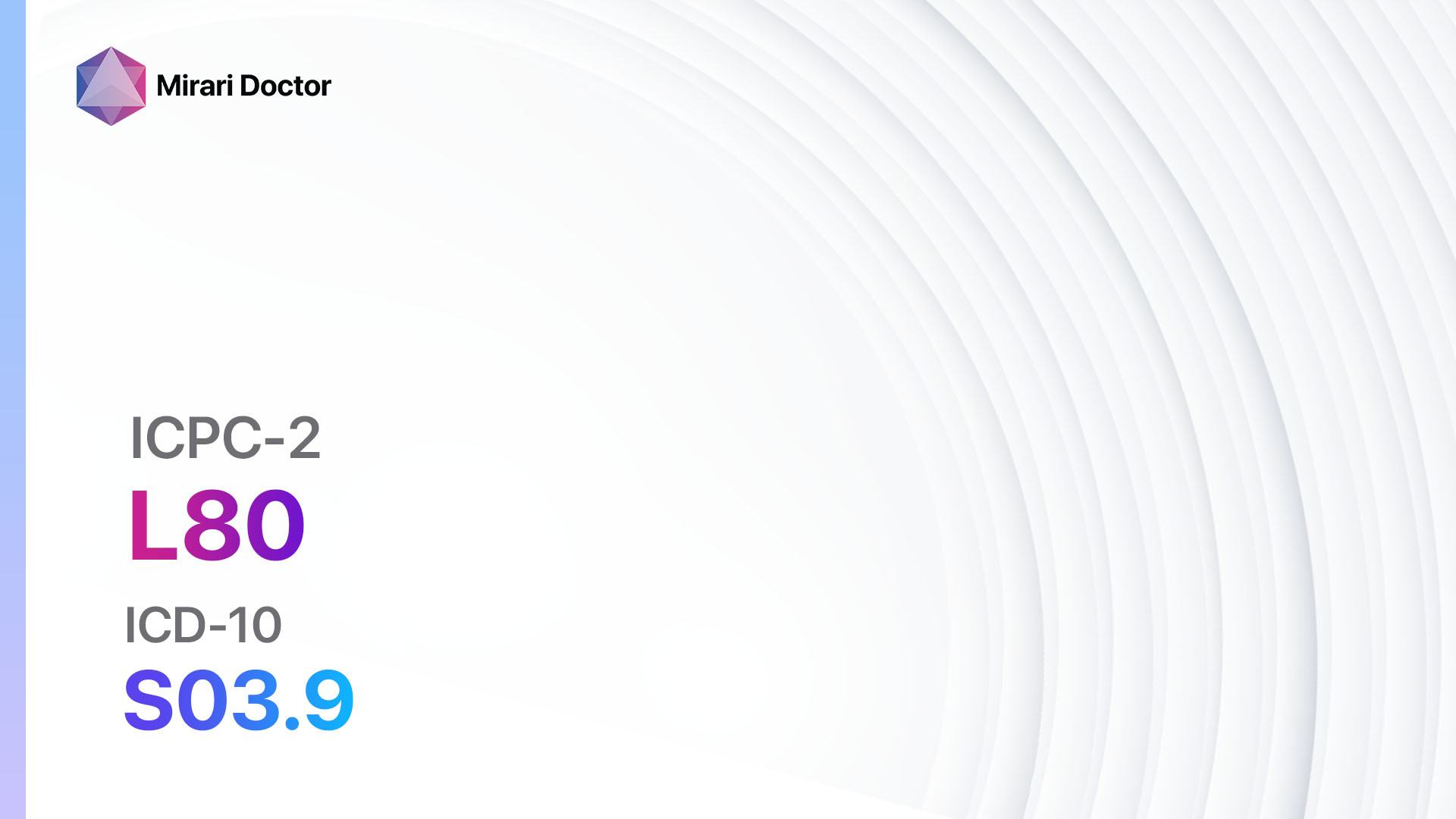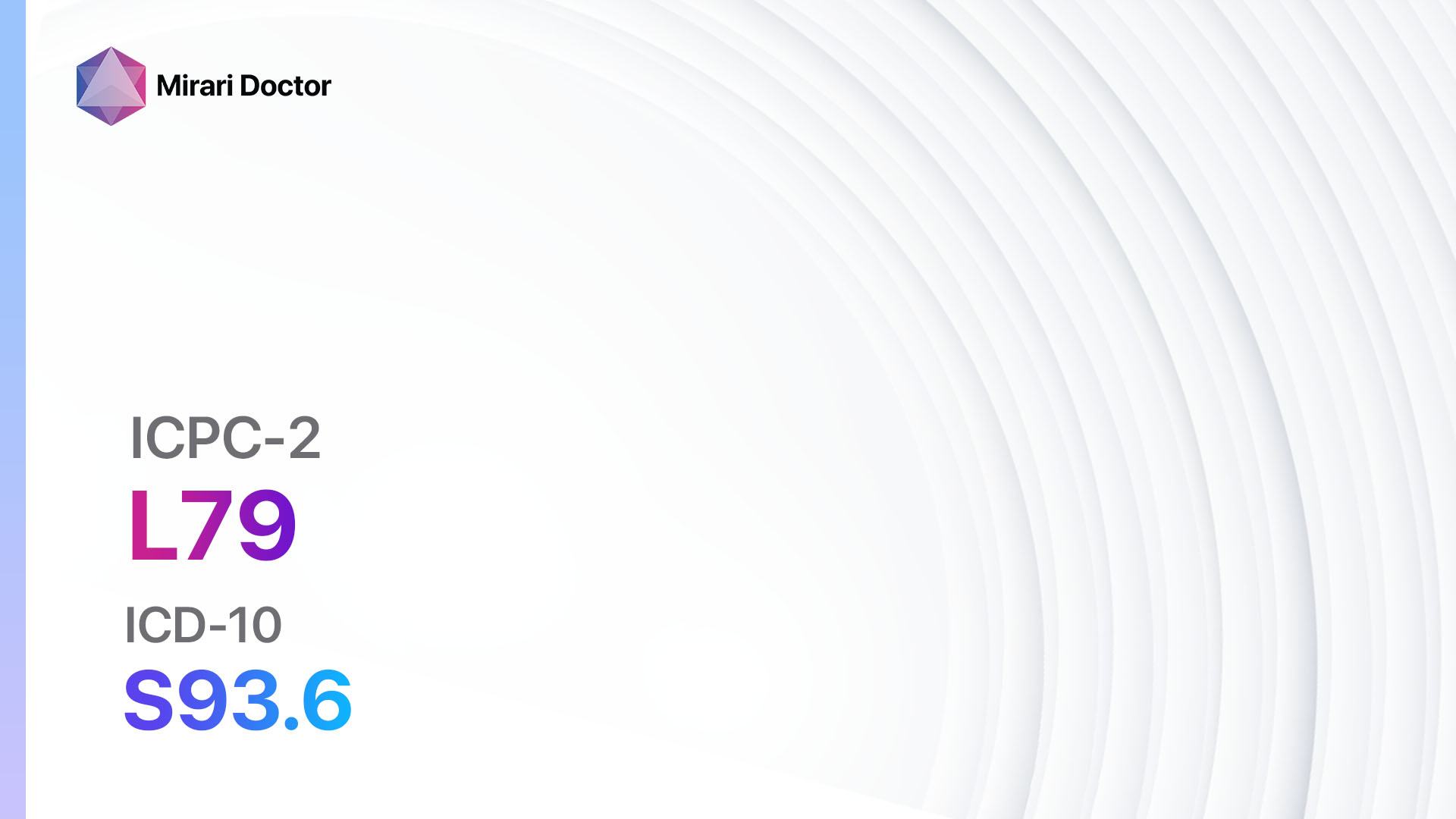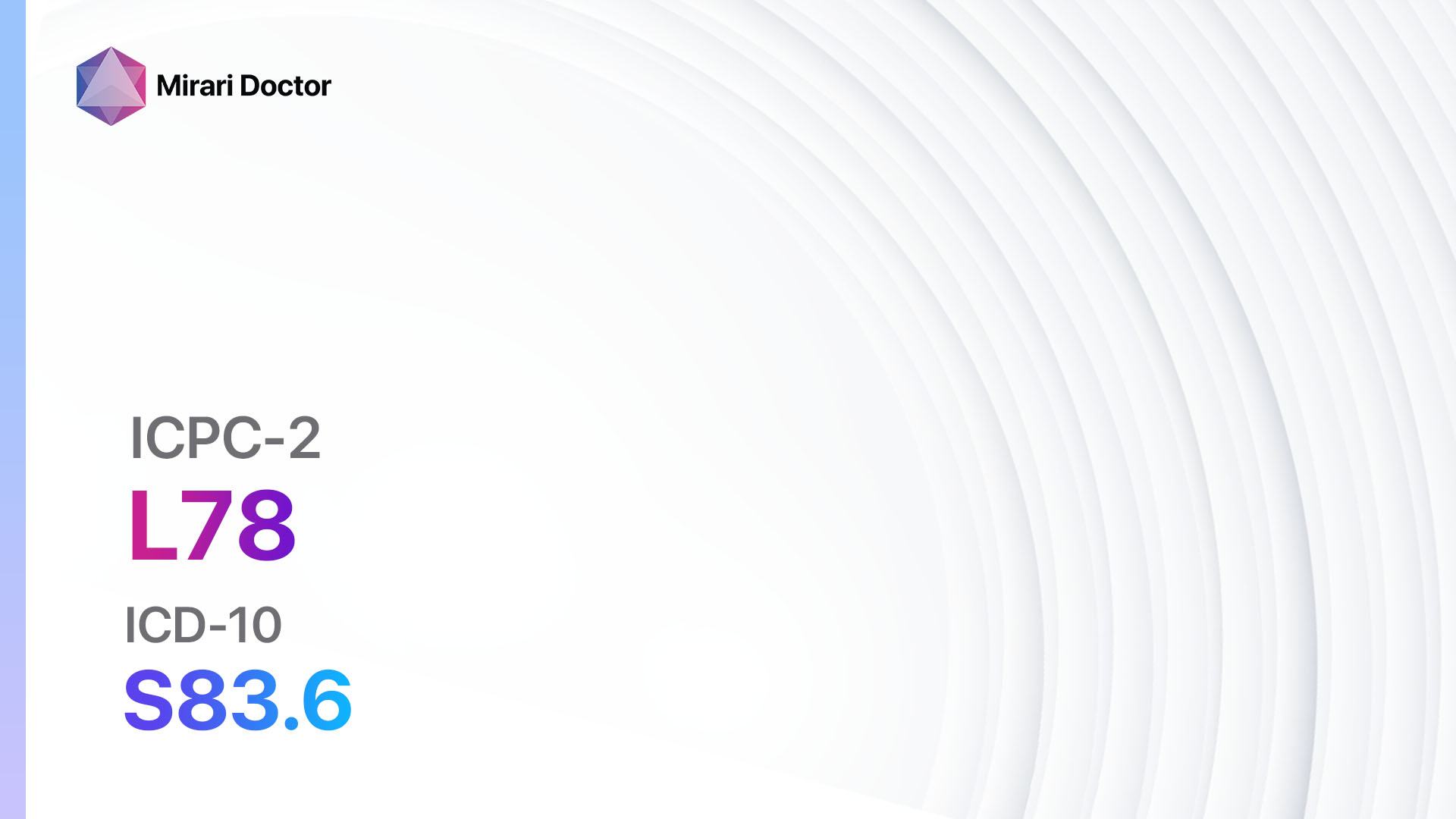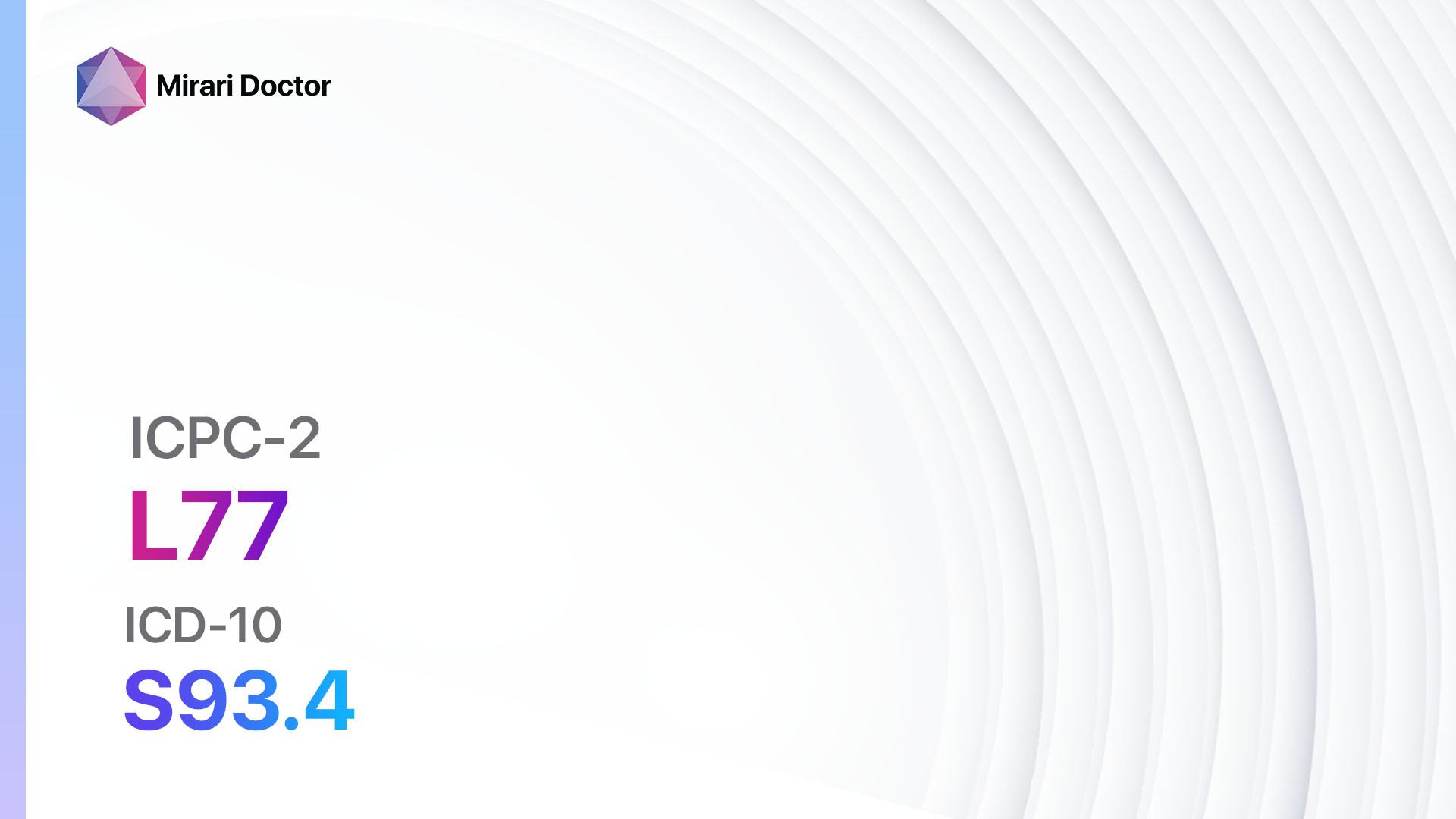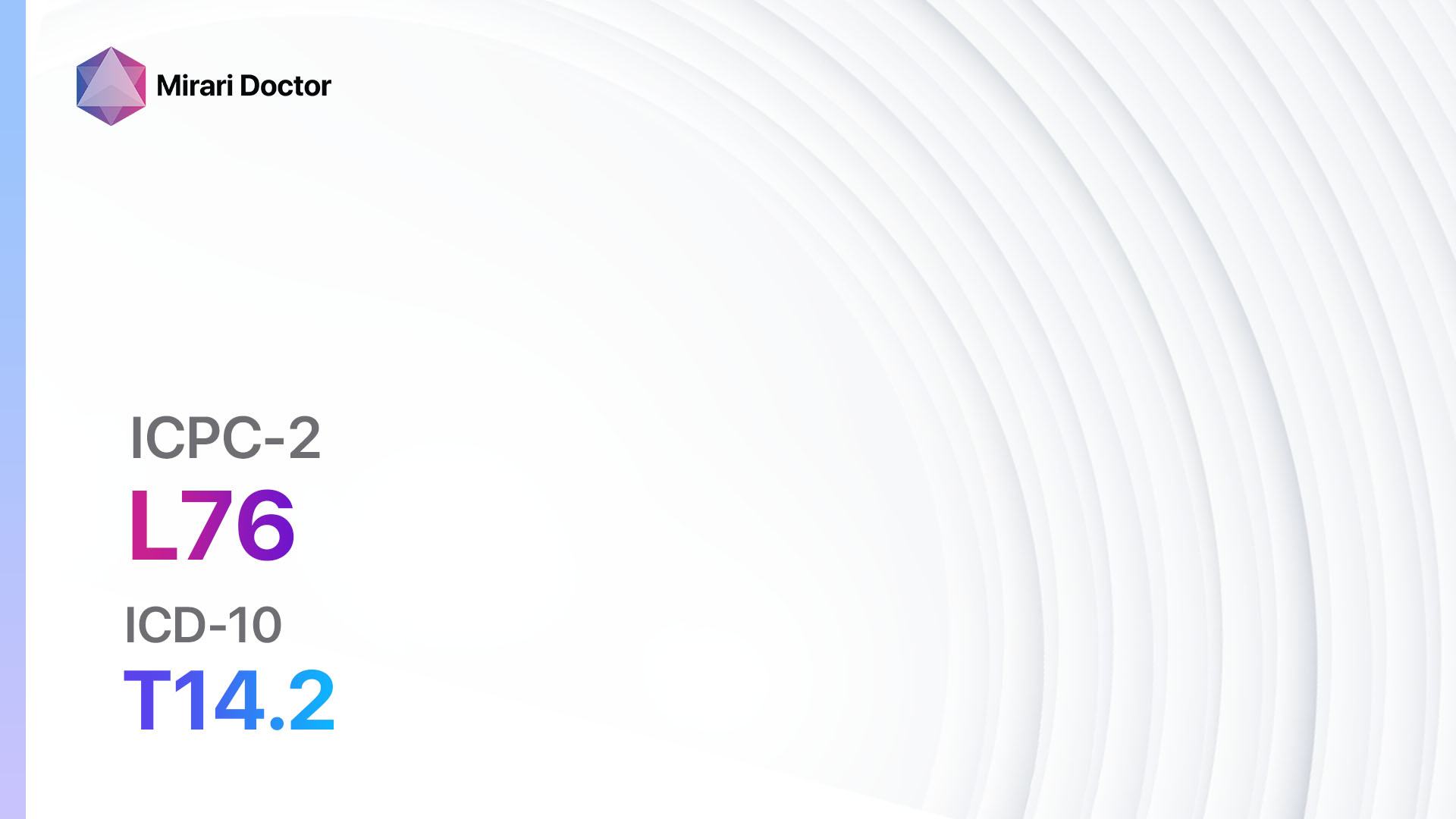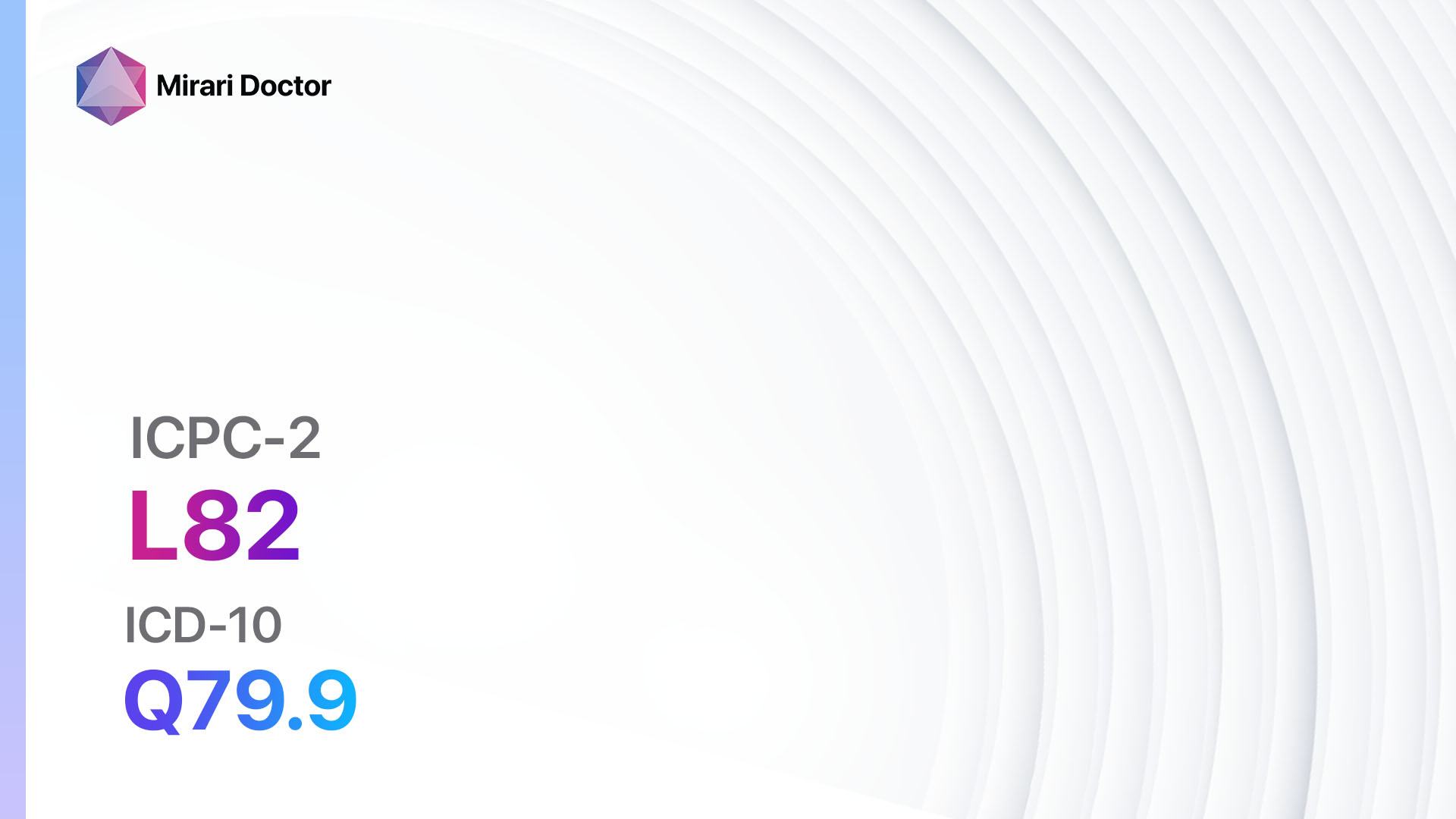
Introduction
Congenital anomaly musculoskeletal refers to a group of musculoskeletal disorders that are present at birth. These anomalies can affect the bones, joints, muscles, tendons, ligaments, or other structures of the musculoskeletal system[1]. The aim of this guide is to provide an overview of the symptoms, causes, diagnostic steps, possible interventions, and lifestyle interventions for congenital anomaly musculoskeletal.
Codes
- ICPC-2 Code: L82 Congenital anomaly musculoskeletal[2]
- ICD-10 Code: Q79.9 Congenital malformation of musculoskeletal system, unspecified[3]
Symptoms
- Limb deformities: Abnormalities in the shape or structure of the limbs, such as clubfoot, polydactyly (extra fingers or toes), or syndactyly (fusion of fingers or toes)[4].
- Joint stiffness or contractures: Limited range of motion in the joints, leading to difficulty in movement[5].
- Muscle weakness or atrophy: Decreased muscle strength or size, resulting in reduced functional abilities[6].
- Spinal deformities: Abnormal curvature of the spine, such as scoliosis or kyphosis[7].
- Gait abnormalities: Abnormal walking patterns, such as limping or toe-walking[8].
Causes
- Genetic factors: Congenital anomaly musculoskeletal can be caused by genetic mutations or abnormalities that occur during fetal development[9].
- Environmental factors: Certain environmental factors, such as exposure to teratogenic substances or maternal infections during pregnancy, can increase the risk of developing musculoskeletal anomalies[10].
Diagnostic Steps
Medical History
- Gather information about the patient’s family history of musculoskeletal disorders or congenital anomalies.
- Inquire about any known genetic conditions or syndromes that may be associated with musculoskeletal anomalies.
- Ask about the presence of any risk factors or exposures during pregnancy that may have contributed to the development of the anomaly.
Physical Examination
- Perform a thorough physical examination, focusing on the affected areas and any associated abnormalities.
- Assess the range of motion in the joints and look for any joint contractures or stiffness.
- Evaluate muscle strength and look for any signs of muscle weakness or atrophy.
- Examine the spine for any signs of curvature abnormalities.
- Observe the patient’s gait and look for any abnormalities in walking patterns.
Laboratory Tests
- Genetic testing: In some cases, genetic testing may be recommended to identify specific genetic mutations or abnormalities associated with musculoskeletal anomalies.
- Blood tests: Blood tests may be performed to rule out other underlying medical conditions or to assess for any metabolic abnormalities that may be contributing to the musculoskeletal anomaly.
Diagnostic Imaging
- X-rays: X-rays can provide detailed images of the bones and joints, allowing for the evaluation of any structural abnormalities or deformities.
- Ultrasound: Ultrasound may be used to assess the development of the fetus during pregnancy and detect any musculoskeletal anomalies.
- CT scans or MRIs: These imaging modalities can provide more detailed images of the musculoskeletal structures, allowing for a more accurate diagnosis and assessment of the anomaly.
Other Tests
- Electrodiagnostic testing: This test measures the electrical activity of muscles and nerves, helping to evaluate muscle function and identify any nerve abnormalities.
- Biopsy: In some cases, a biopsy may be performed to examine a sample of tissue from the affected area, providing further information about the nature of the anomaly.
Follow-up and Patient Education
- Schedule regular follow-up appointments to monitor the progression of the musculoskeletal anomaly and assess the effectiveness of interventions.
- Provide education and support to the patient and their family regarding the nature of the anomaly, available treatment options, and strategies for managing symptoms and improving functional abilities.
Possible Interventions
Traditional Interventions
Medications:
Top 5 drugs for Congenital anomaly musculoskeletal:
- Nonsteroidal anti-inflammatory drugs (NSAIDs) (e.g., Ibuprofen, Naproxen):
- Cost: Generic versions can be $3-$20/month.
- Contraindications: History of gastrointestinal bleeding, renal impairment.
- Side effects: Upset stomach, increased risk of bleeding.
- Severe side effects: Severe allergic reactions, liver damage.
- Drug interactions: Anticoagulants, other NSAIDs.
- Warning: Prolonged use may increase the risk of cardiovascular events.
- Muscle relaxants (e.g., Baclofen, Cyclobenzaprine):
- Cost: Generic versions can be $10-$30/month.
- Contraindications: History of hypersensitivity to muscle relaxants, liver disease.
- Side effects: Drowsiness, dizziness.
- Severe side effects: Severe allergic reactions, hallucinations.
- Drug interactions: Sedatives, alcohol.
- Warning: May cause drowsiness or impair cognitive function.
- Analgesics (e.g., Acetaminophen, Tramadol):
- Cost: Generic versions can be $3-$20/month.
- Contraindications: History of liver disease, hypersensitivity to analgesics.
- Side effects: Upset stomach, drowsiness.
- Severe side effects: Liver toxicity, respiratory depression.
- Drug interactions: Alcohol, other analgesics.
- Warning: Avoid exceeding the recommended dosage to prevent liver damage.
- Corticosteroids (e.g., Prednisone, Dexamethasone):
- Cost: Generic versions can be $10-$50/month.
- Contraindications: Active infections, systemic fungal infections.
- Side effects: Increased appetite, weight gain.
- Severe side effects: Adrenal suppression, osteoporosis.
- Drug interactions: Nonsteroidal anti-inflammatory drugs, immunosuppressants.
- Warning: Prolonged use may lead to adrenal insufficiency.
- Disease-modifying antirheumatic drugs (DMARDs) (e.g., Methotrexate, Sulfasalazine):
- Cost: Generic versions can be $10-$50/month.
- Contraindications: Pregnancy, liver disease.
- Side effects: Nausea, hair loss.
- Severe side effects: Bone marrow suppression, liver toxicity.
- Drug interactions: Other immunosuppressants, NSAIDs.
- Warning: Regular monitoring of liver function and blood counts is required.
Alternative Drugs:
- Physical therapy: Physical therapy can help improve muscle strength, range of motion, and functional abilities. Cost: $50-$150 per session.
- Orthotic devices: Custom-made braces or splints can provide support and improve alignment of the affected limbs. Cost: Varies depending on the type and complexity of the device.
- Surgical interventions: In some cases, surgical interventions may be necessary to correct structural abnormalities or improve functional outcomes. Cost: Varies depending on the specific procedure and complexity.
Surgical Procedures:
- Osteotomy: This surgical procedure involves cutting and reshaping the bones to correct deformities or improve alignment.
- Cost: $10,000 to $50,000.
- Arthrodesis: Arthrodesis is a surgical procedure that fuses two or more bones together to stabilize a joint and improve function.
- Cost: $15,000 to $60,000.
- Tendon lengthening or transfer: This procedure involves lengthening or transferring tendons to improve muscle balance and function.
- Cost: $10,000 to $40,000.
- Joint replacement: In severe cases of joint damage, joint replacement surgery may be considered to improve mobility and reduce pain.
- Cost: $20,000 to $80,000.
- Spinal fusion: Spinal fusion surgery is performed to stabilize the spine and correct spinal deformities.
- Cost: $50,000 to $100,000.
Alternative Interventions
- Acupuncture: May help alleviate pain and improve overall well-being.
- Cost: $60-$120 per session.
- Chiropractic care: Can help improve joint mobility and reduce pain.
- Cost: $50-$150 per session.
- Massage therapy: May help relax muscles, improve circulation, and reduce pain.
- Cost: $50-$100 per session.
- Herbal supplements: Some herbal supplements, such as turmeric or ginger, may have anti-inflammatory properties and can be used as adjunctive therapy.
- Cost: Varies depending on the specific supplement.
- Yoga or Pilates: These forms of exercise can help improve flexibility, strength, and posture.
- Cost: $10-$20 per class.
Lifestyle Interventions
- Regular exercise: Engaging in regular physical activity can help improve muscle strength, flexibility, and overall functional abilities.
- Healthy diet: Consuming a balanced diet rich in nutrients can support optimal musculoskeletal health.
- Weight management: Maintaining a healthy weight can reduce the strain on the musculoskeletal system and improve overall mobility.
- Assistive devices: Using assistive devices, such as canes, crutches, or walkers, can provide support and improve mobility.
- Physical therapy: Regular physical therapy sessions can help improve muscle strength, range of motion, and functional abilities.
It is important to note that the cost ranges provided are approximate and may vary depending on the location and availability of the interventions. It is recommended to consult with healthcare professionals for personalized treatment options and cost estimates.
Mirari Cold Plasma Alternative Intervention
Understanding Mirari Cold Plasma
- Safe and Non-Invasive Treatment: Mirari Cold Plasma is a safe and non-invasive treatment option for various skin conditions. It does not require incisions, minimizing the risk of scarring, bleeding, or tissue damage.
- Efficient Extraction of Foreign Bodies: Mirari Cold Plasma facilitates the removal of foreign bodies from the skin by degrading and dissociating organic matter, allowing easier access and extraction.
- Pain Reduction and Comfort: Mirari Cold Plasma has a local analgesic effect, providing pain relief during the treatment, making it more comfortable for the patient.
- Reduced Risk of Infection: Mirari Cold Plasma has antimicrobial properties, effectively killing bacteria and reducing the risk of infection.
- Accelerated Healing and Minimal Scarring: Mirari Cold Plasma stimulates wound healing and tissue regeneration, reducing healing time and minimizing the formation of scars.
Mirari Cold Plasma Prescription
Video instructions for using Mirari Cold Plasma Device – L82 Congenital anomaly musculoskeletal (ICD-10:Q79.9)
| Mild | Moderate | Severe |
| Mode setting: 2 (Wound Healing) Location: 0 (Localized) Morning: 15 minutes, Evening: 15 minutes |
Mode setting: 2 (Wound Healing) Location: 0 (Localized) Morning: 30 minutes, Lunch: 30 minutes, Evening: 30 minutes |
Mode setting: 2 (Wound Healing) Location: 0 (Localized) Morning: 30 minutes, Lunch: 30 minutes, Evening: 30 minutes |
| Mode setting: 9 (Arthritis) Location: 0 (Localized) Morning: 15 minutes, Evening: 15 minutes |
Mode setting: 9 (Arthritis) Location: 0 (Localized) Morning: 30 minutes, Lunch: 30 minutes, Evening: 30 minutes |
Mode setting: 9 (Arthritis) Location: 0 (Localized) Morning: 30 minutes, Lunch: 30 minutes, Evening: 30 minutes |
| Total Morning: 30 minutes approx. $5 USD, Evening: 30 minutes approx. $5 USD |
Total Morning: 60 minutes approx. $10 USD, Lunch: 60 minutes approx. $10 USD, Evening: 60 minutes approx. $10 USD, |
Total Morning: 60 minutes approx. $10 USD, Lunch: 60 minutes approx. $10 USD, Evening: 60 minutes approx. $10 USD, |
| Usual treatment for 7-60 days approx. $70 USD – $600 USD | Usual treatment for 6-8 weeks approx. $1,260 USD – $1,680 USD |
Usual treatment for 3-6 months approx. $2,700 USD – $5,400 USD
|
 |
|
Use the Mirari Cold Plasma device to treat Congenital anomaly musculoskeletal effectively.
WARNING: MIRARI COLD PLASMA IS DESIGNED FOR THE HUMAN BODY WITHOUT ANY ARTIFICIAL OR THIRD PARTY PRODUCTS. USE OF OTHER PRODUCTS IN COMBINATION WITH MIRARI COLD PLASMA MAY CAUSE UNPREDICTABLE EFFECTS, HARM OR INJURY. PLEASE CONSULT A MEDICAL PROFESSIONAL BEFORE COMBINING ANY OTHER PRODUCTS WITH USE OF MIRARI.
Step 1: Cleanse the Skin
- Start by cleaning the affected area of the skin with a gentle cleanser or mild soap and water. Gently pat the area dry with a clean towel.
Step 2: Prepare the Mirari Cold Plasma device
- Ensure that the Mirari Cold Plasma device is fully charged or has fresh batteries as per the manufacturer’s instructions. Make sure the device is clean and in good working condition.
- Switch on the Mirari device using the power button or by following the specific instructions provided with the device.
- Some Mirari devices may have adjustable settings for intensity or treatment duration. Follow the manufacturer’s instructions to select the appropriate settings based on your needs and the recommended guidelines.
Step 3: Apply the Device
- Place the Mirari device in direct contact with the affected area of the skin. Gently glide or hold the device over the skin surface, ensuring even coverage of the area experiencing.
- Slowly move the Mirari device in a circular motion or follow a specific pattern as indicated in the user manual. This helps ensure thorough treatment coverage.
Step 4: Monitor and Assess:
- Keep track of your progress and evaluate the effectiveness of the Mirari device in managing your Congenital anomaly musculoskeletal. If you have any concerns or notice any adverse reactions, consult with your health care professional.
Note
This guide is for informational purposes only and should not replace the advice of a medical professional. Always consult with your healthcare provider or a qualified medical professional for personal advice, diagnosis, or treatment. Do not solely rely on the information presented here for decisions about your health. Use of this information is at your own risk. The authors of this guide, nor any associated entities or platforms, are not responsible for any potential adverse effects or outcomes based on the content.
Mirari Cold Plasma System Disclaimer
- Purpose: The Mirari Cold Plasma System is a Class 2 medical device designed for use by trained healthcare professionals. It is registered for use in Thailand and Vietnam. It is not intended for use outside of these locations.
- Informational Use: The content and information provided with the device are for educational and informational purposes only. They are not a substitute for professional medical advice or care.
- Variable Outcomes: While the device is approved for specific uses, individual outcomes can differ. We do not assert or guarantee specific medical outcomes.
- Consultation: Prior to utilizing the device or making decisions based on its content, it is essential to consult with a Certified Mirari Tele-Therapist and your medical healthcare provider regarding specific protocols.
- Liability: By using this device, users are acknowledging and accepting all potential risks. Neither the manufacturer nor the distributor will be held accountable for any adverse reactions, injuries, or damages stemming from its use.
- Geographical Availability: This device has received approval for designated purposes by the Thai and Vietnam FDA. As of now, outside of Thailand and Vietnam, the Mirari Cold Plasma System is not available for purchase or use.
References
- Herring, J. A. (2014). Tachdjian’s pediatric orthopaedics: from the Texas Scottish Rite Hospital for children. Elsevier Health Sciences.
- ICD-10 code: Q79.9 Congenital malformation of musculoskeletal system, unspecified. (n.d.). Retrieved from https://gesund.bund.de/en/icd-code-search/q79-9
- Morcuende, J. A., Dolan, L. A., Dietz, F. R., & Ponseti, I. V. (2004). Radical reduction in the rate of extensive corrective surgery for clubfoot using the Ponseti method. Pediatrics, 113(2), 376-380.
- Staheli, L. T. (2006). Practice of pediatric orthopedics. Lippincott Williams & Wilkins.
- Emery, A. E. H. (2002). The muscular dystrophies. The Lancet, 359(9307), 687-695.
- Weinstein, S. L., Dolan, L. A., Cheng, J. C., Danielsson, A., & Morcuende, J. A. (2008). Adolescent idiopathic scoliosis. The Lancet, 371(9623), 1527-1537.
- Sutherland, D. H., Olshen, R. I. C. H. A. R. D., Biden, E. N., & Wyatt, M. P. (1988). The development of mature walking. Cambridge University Press.
- Giampietro, P. F., Blank, R. D., Raggio, C. L., Merchant, S., Jacobsen, F. S., Faciszewski, T., … & Glurich, I. (2003). Congenital and idiopathic scoliosis: clinical and genetic aspects. Clinical medicine & research, 1(2), 125-136.
- Vrijheid, M., Dolk, H., Stone, D., Abramsky, L., Alberman, E., & Scott, J. E. S. (2000). Socioeconomic inequalities in risk of congenital anomaly. Archives of Disease in Childhood, 82(5), 349-352.
- Tassabehji, M. (2003). Williams-Beuren syndrome: a challenge for genotype-phenotype correlations. Human molecular genetics, 12(suppl_2), R229-R237.
Related articles
Made in USA



